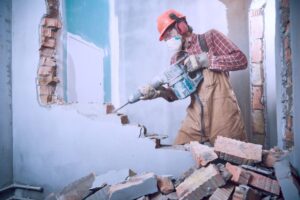- Home
- About Us
arrow_drop_down
- News
arrow_drop_down
- How to Join
- Membership
arrow_drop_down
- Membership benefits
arrow_drop_down
- Membership benefits
- Help and Advice
arrow_drop_down
- Find a Craftsman
arrow_drop_down
Domestic VAT reverse charge
 From 1 March 2021 the domestic VAT reverse charge came into effect. The Government had been trying to implement this change since October 2019 but the change was delayed by Brexit.
From 1 March 2021 the domestic VAT reverse charge came into effect. The Government had been trying to implement this change since October 2019 but the change was delayed by Brexit.
The new reverse charge applies to most supplies and construction services. The reverse charge is an accounting mechanism for VAT whereby the business charges themselves VAT, rather than the supplier charging VAT.
The domestic reverse charge has been brought in to assist in reducing VAT fraud.
With the reverse charge, it is now the businesses responsibility to account for VAT; this means there is no opportunity for the supplier to disappear without paying VAT to HMRC.
The reverse charge also means that Guild Members may no longer need to charge VAT to their customers or may no longer be charged VAT by their suppliers.
The domestic reverse charge does not apply to end users.
The domestic reverse charge applies to standard and reduced rate VAT services, i.e.
a) for individuals or businesses who are registered for VAT in the UK.
b) reported within the Construction Industry Scheme.
 What you need to know about the domestic reverse charge:
What you need to know about the domestic reverse charge:
– Check when you must use the domestic reverse charge on sales and purchases or both.
– To find out how the charge works if you supply services, visit here.
– To find out how to charge for work if you buy services, visit here.
– You can read more detailed information about the domestic VAT reverse charge here.
How to prepare and what you need to do next:
– Make sure that your accounting system can deal with the reverse charge.
– Consider whether the reverse charge will impact your cash flow.
– Make sure that all staff who are responsible for VAT accounting are familiar with the domestic reverse charge and know how it works.
– If the VAT reverse charge does not apply, you should follow the normal VAT rules.
 When is the domestic reverse charge to be used?
When is the domestic reverse charge to be used?
– Constructing, altering, repairing, extending, demolishing or dismantling buildings or structures (permanent or not), including offshore installation services.
– Constructing, altering, repairing, extending, demolishing of any works forming, or planned to form, part of the land including walls, roadworks, power lines, electronic communications equipment, railways, inland waterways, docks and harbours, pipelines, reservoirs, water mains, wells, sewers, industrial plants, and installation for the purpose of land drainage, coast protection or defence.
– Installing heating, lighting, air-conditioning, ventilation, power supply, drainage, sanitation, water supply or fire protection systems in any building or structure.
– Internal cleaning of buildings and structures, so far as carried out during construction, alterations, repairs, extension or restoration.
– Painting and decorating the inside or the external surfaces of any building or structure.
– Services that form an integral part of the preparation or completion of the services listed above, including site clearance, earth moving, excavations, tunnelling and boring, laying of foundations, erection of scaffolding, site restoration, landscaping and the provision of roadways and other access works.
When not to use the domestic reverse charge:
– Installing seating, blinds and shutters.
– Installing security systems, closed circuit tv and public address systems.
– Making, installing and repairing artwork such as signwriting, sign boards and advertisements.
– Manufacturing building or engineering components or equipment, materials, plant, or machinery or delivering any of these elements to site.
– Manufacturing components for heating, lighting, air-conditioning, ventilation. Power supply, drainage, sanitation, water supply or fire protection systems or delivering any of these to site.
– The professional work of architects or surveyors, or of building, engineering, interior or exterior decoration and landscape consultants.

An example of applying the domestic reverse charge:
Here’s an example of a typical transaction to help illustrate the difference between the old and new VAT rules.
Dennis the plasterer supplies labour and materials for the main contractor. The contractor is VAT registered and in turn supplies construction services to a developer who is also VAT registered. The developer finds and develops land and will, in this case, bring the build to completion and supply a finished commercial building to the end user, its client.
Under the old VAT rules, Dennis the plasterer would have charged the contractor the sum of, say, £30,000.00 plus VAT (20%): a total of £36,000.00.
However, from 1 March 2021, under the domestic reverse charge scheme, Dennis will invoice the contractor the sum of £30,000.00, and his invoice will state that the CIS reverse charge applies.
The contractor pays Dennis the sum of £30,000.00. The contractor then accounts for the output and input VAT of £6,000.00 on the supply on the contractor’s own VAT return.
For further information on the domestic VAT reverse charge, click here
